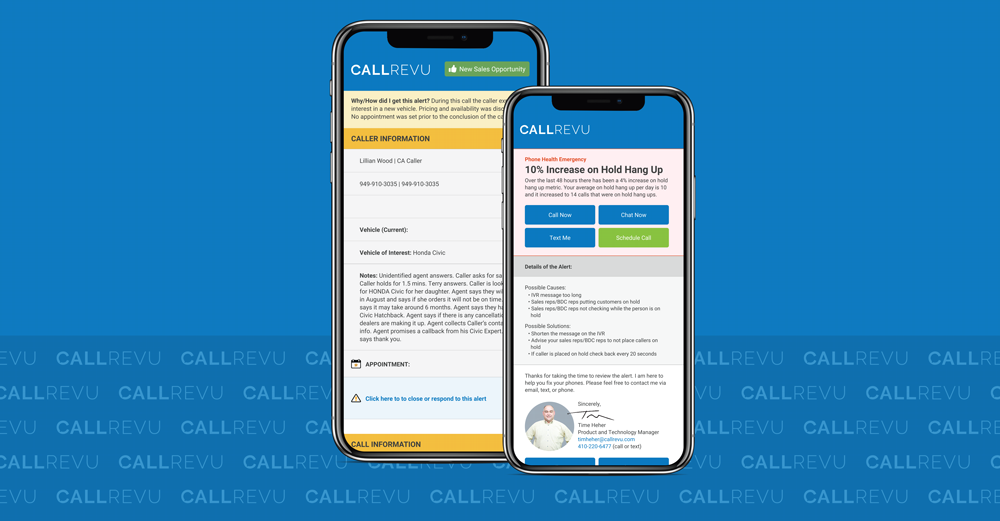Alerts are not one size fits all. If you truly want to maximize your phone’s potential, you should have a documented plan for outreach. Design your roster to have the best resources on hand for dealing with alerts. While we’d like to tell you that alerts are a good thing (and they are!), it’s usually your second opportunity to win a customer over, so you want it to go smoothly.
One of the great things about technology is the automation possibilities, eliminating rote tasks and giving us humans the ability to focus on what we do best. Many of these automation capabilities come in the form of alerts. For example, you might be notified when your systems aren’t up and running smoothly or you might receive an alert when you miss out on a sales opportunity (yes, that’s absolutely possible).
If you’ve ever had a smartphone, you know what happens with alerts‚ they quickly pile up and it’s easy to become desensitized to them. With call monitoring alerts, the same thing can happen. Here are a few best practices to ensure your alerts are actually, you know, alerting you.
1. Make sure your roster of recipients is up to date and organized.
This can quickly become a task that gets lost in the tedium, but it’s absolutely essential that you know who is receiving which alerts. Workplace shifts such as attrition, role changes, store expansions, and even modifications to your technology ecosystem can quickly cause your roster of recipients to change. If you truly want alerts to be met with action (and you do!), make sure you have a current, organized list.
It’s also important for security purposes that you are updating this roster frequently to eliminate any breaches of information.
2. Have a plan for outreach following the notification.
Alerts are not one size fits all. If you truly want to maximize your phone’s potential, you should have a documented plan for outreach. Design your roster to have the best resources on hand for dealing with alerts. While we’d like to tell you that alerts are a good thing (and they are!), it’s usually your second opportunity to win a customer over, so you want it to go smoothly.
- Identify who follows up and make sure the role is clear. Notify that person of expectations regarding timeframes for follow-up, expectations of offers, and intended outcomes.
- Provide scripts and helpful hints for dealing with the specific customer. Did they experience a service issue? Or maybe they had a bad experience during their call. In any event, prepare your staff member ahead of time to enhance the chances of success.
- Supply materials for how to deal with mishandled calls. With calls gone bad, you want to prepare ahead as much as possible. Why are many calls mishandled? What are the causes? How can you help guide it toward success?
3. Log all call details in your CRM.
We can’t stress this one enough. Your CRM exists to act as a holistic view of the customer. If you don’t log your call details, that interaction is lost on the next staff member who deals with the customer. The customer then becomes frustrated that they are having to repeat conversations. Alerts only work if you have a personalized, working history of each customer interaction. Make sure all call details, including the original phone conversation, are logged for the next staff member.
Some savvy call monitoring systems integrate with your CRM, automatically logging call details, with transcripts and call summaries, to eliminate manual entry while assuring your customer data stays up to date.
4. Circle back with training based on what went wrong.
You’ve been alerted! Now what? Mishandled calls happen for a reason. To simply try to remedy one customer interaction isn’t enough‚ you have to improve your processes. Ask yourself these questions.
- Was the mishandled call an isolated incident or indicative of a larger trend?
- If it’s the result of a single situation, provide additional, personalized training to the staff member to help prevent future issues.
- If the call indicates that many calls are being mishandled for a singular reason, provide additional staff-wide training to help your staff improve as a team.
- Always use individualized coaching and review transcripts to understand how real calls go wrong.
Alerts aren’t there to punish, but to help you move down the continual path to improvement. View each alert as an opportunity and you will continue to provide top-notch customer service.






